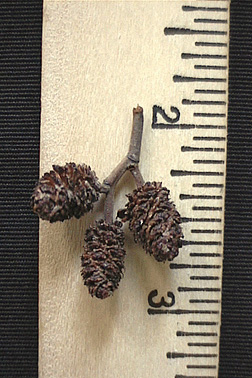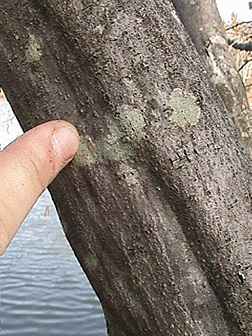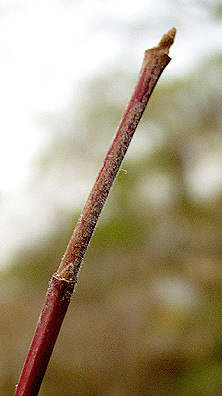Leaf: Alternate, simple, obovate to elliptical, 2 to 4 inches long, pinnately-veined, finely serrated wavy margin, dark green above, paler and finely hairy beneath.
Flower: Species is monoecious; both males and females preformed; males green brown catkins, 1 to 1 1/2 inches; female 1/2 inch long, reddish, opening in early spring.
Fruit: Woody, cone like catkin, 1/2 inch long, dark brown with each scale enclosing a tiny, winged seed. Fruit ripens in fall and is very persistant.
Twig: Reddish brown with gray fuzz, 3-angled pith; buds are stalked, plump, covered in 2 to 3 red-purple scales, resemble a match head.
Bark: Thin, gray to brown and smooth, trunk fluted.
Form: A multi-stemmed small tree or large shrub with several twisted stems reaching up to 15 feet tall.







Notes:






























































